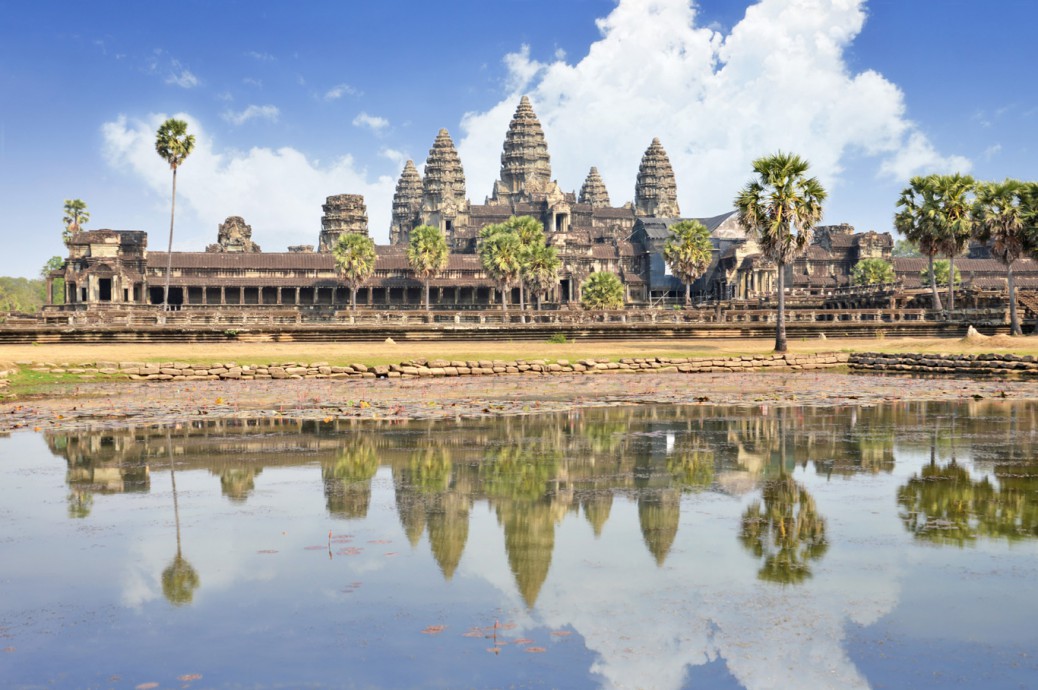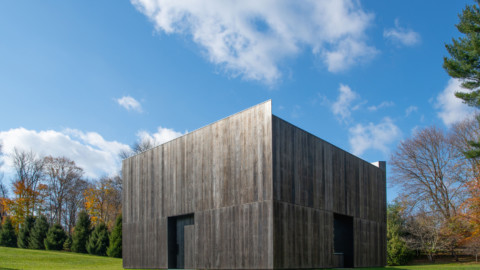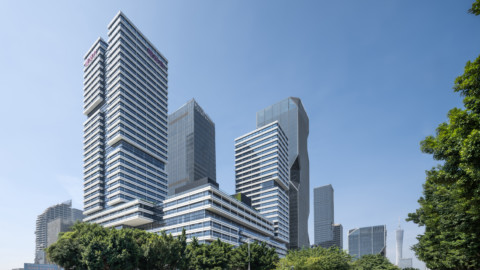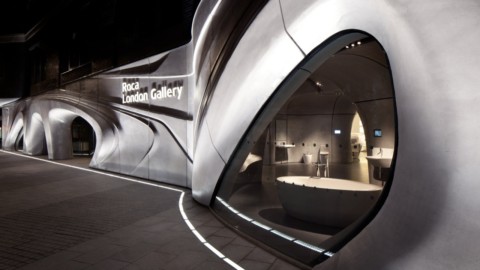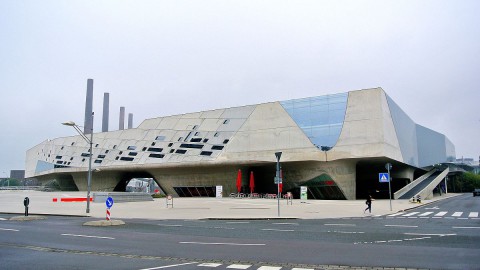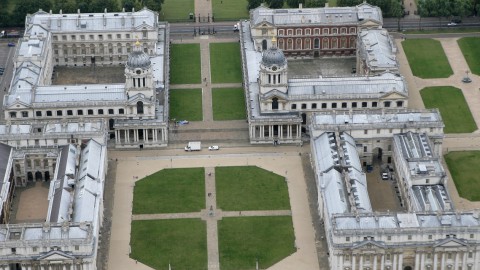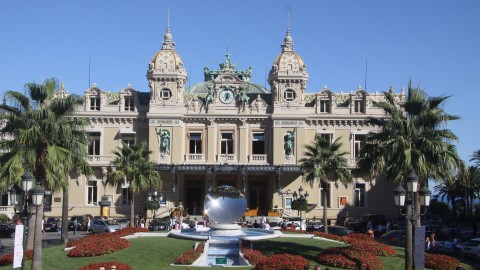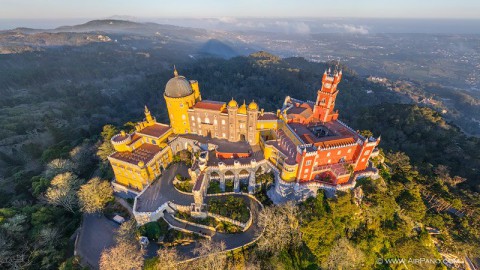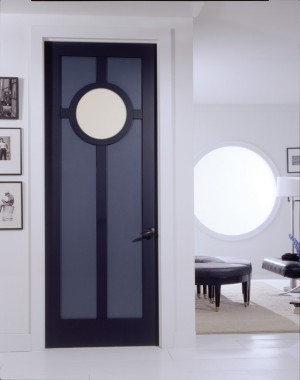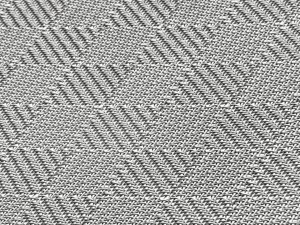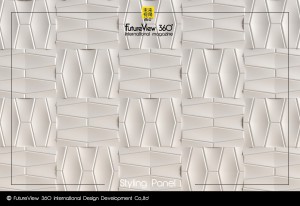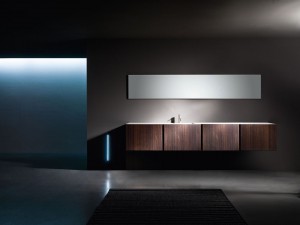Angkor Wat 吳哥窟

Angkor Wat (/ˌæŋkɔːr ˈwɒt/; Khmer: អង្គរវត្ត, “Capital Temple”) is a temple complex in Cambodia and one of the largest religious monuments in the world, on a site measuring 162.6 hectares (1,626,000 m2; 402 acres). Originally constructed as a Hindu temple dedicated to the god Vishnu for the Khmer Empire, it was gradually transformed into a Buddhist temple towards the end of the 12th century. It was built by the Khmer King Suryavarman II in the early 12th century in Yaśodharapura (Khmer: យសោធរបុរៈ, present-day Angkor), the capital of the Khmer Empire, as his state temple and eventual mausoleum. Breaking from the Shaiva tradition of previous kings, Angkor Wat was instead dedicated to Vishnu. As the best-preserved temple at the site, it is the only one to have remained a significant religious centre since its foundation. The temple is at the top of the high classical style of Khmer architecture. It has become a symbol of Cambodia, appearing on its national flag, and it is the country’s prime attraction for visitors.
Angkor Wat combines two basic plans of Khmer temple architecture: the temple-mountain and the later galleried temple. It is designed to represent Mount Meru, home of the devas in Hindu mythology: within a moat more than 5 kilometres (3 mi) long and an outer wall 3.6 kilometres (2.2 mi) long are three rectangular galleries, each raised above the next. At the centre of the temple stands a quincunx of towers. Unlike most Angkorian temples, Angkor Wat is oriented to the west; scholars are divided as to the significance of this. The temple is admired for the grandeur and harmony of the architecture, its extensive bas-reliefs, and for the numerous devatas adorning its walls.
吳哥窟(/ˌæŋkɔːrwɒt/;高棉:អង្គរវត្ត,“首都聖殿”)是柬埔寨的一座寺廟建築群,也是世界上最大的宗教遺蹟之一,佔地162.6公頃(1,626,000平方米; 402英畝)。最初建造為印度教寺廟,供奉高棉帝國的毘濕奴神,它在12世紀末逐漸變成了一座佛教寺廟。它是由高棉國王蘇里亞曼二世在12世紀初在高棉帝國的首都Yaśodharapura(高棉語:យសោធរបុរៈ,現今的吳哥)建造的,作為他的國家寺廟和最終的陵墓。從先前國王的Shaiva傳統中脫離出來,吳哥窟專門用於毘濕奴。作為該遺址保存最完好的寺廟,它是唯一一個自成立以來一直是重要宗教中心的寺廟。寺廟位於高棉建築的高古典風格的頂部。它已成為柬埔寨的象徵,出現在其國旗上,它是該國最吸引遊客的地方。
吳哥窟結合了高棉寺廟建築的兩個基本計劃:寺廟山和後來的畫廊。它被設計成代表印度神話中的devas之家的梅魯山(Mount Meru):長度超過5公里(3英里)的護城河和長3.6公里(2.2英里)的外牆是三個長方形的畫廊,每個畫廊都高出下一個。在寺廟的中心矗立著一個梅花的塔。與大多數吳哥窟寺廟不同,吳哥窟面向西方;學者們對此有何意義。這座寺廟因建築的宏偉與和諧,廣闊的淺浮雕以及裝飾其牆壁的眾多devatas而備受讚賞。
Location:Angkor, Siem Reap, Cambodia
Coordinates:13°24′45″N 103°52′0″ECoordinates: 13°24′45″N 103°52′0″E
Altitude 65 m (213 ft)
History
Builder:Started by Suryavarman II Completed by Jayavarman VII
Founded:12th century
Cultures: Khmer Empire
Architecture
Architectural styles:Khmer (Angkor Wat style)
地點:吳哥,暹粒,柬埔寨
坐標:13°24’45“N 103°52’0”ECoordinates:13°24’45“N 103°52’0”E
海拔65米(213英尺)
歷史
建造者:由Suryavarman II開始由Jayavarman VII完成
成立時間:12世紀
文化:高棉帝國
建築
建築風格:高棉(吳哥窟風格)
Architecture
Style
Angkor Wat is the prime example of the classical style of Khmer architecture—the Angkor Wat style—to which it has given its name. By the 12th century Khmer architects had become skilled and confident in the use of sandstone (rather than brick or laterite) as the main building material. Most of the visible areas are of sandstone blocks, while laterite was used for the outer wall and for hidden structural parts. The binding agent used to join the blocks is yet to be identified, although natural resins or slaked lime has been suggested.
The temple has drawn praise above all for the harmony of its design. According to Maurice Glaize, a mid-20th-century conservator of Angkor, the temple “attains a classic perfection by the restrained monumentality of its finely balanced elements and the precise arrangement of its proportions. It is a work of power, unity and style.”
Architecturally, the elements characteristic of the style include: the ogival, redented towers shaped like lotus buds; half-galleries to broaden passageways; axial galleries connecting enclosures; and the cruciform terraces which appear along the main axis of the temple. Typical decorative elements are devatas (or apsaras), bas-reliefs, and on pediments extensive garlands and narrative scenes. The statuary of Angkor Wat is considered conservative, being more static and less graceful than earlier work.Other elements of the design have been destroyed by looting and the passage of time, including gilded stucco on the towers, gilding on some figures on the bas-reliefs, and wooden ceiling panels and doors.
建築
樣式
吳哥窟是古典風格的高棉建築的典型代表 – 吳哥窟風格 – 它的名字。到了12世紀,高棉建築師已經熟練地使用砂岩(而不是磚或紅土)作為主要建築材料。大多數可見區域是砂岩塊,而紅土用於外牆和隱藏的結構部分。雖然已經提出了天然樹脂或熟石灰,但尚未確定用於連接嵌段的粘合劑。
寺廟因其設計的和諧而備受讚譽。根據20世紀中葉吳哥窟的莫里斯·格萊茲(Maurice Glaize)的說法,這座寺廟“以其精緻平衡的元素和精確的比例安排得到了古老的完美結構。它是一種力量,統一和風格的作品。 “
在建築方面,這種風格的元素包括:ogival,形狀像蓮花芽的褶皺塔;半畫廊擴大通道;軸向通道連接外殼;和沿著寺廟主軸出現的十字形梯田。典型的裝飾元素是devatas(或apsaras),淺浮雕,以及山形牆上廣泛的花環和敘事場景。吳哥窟的雕像被認為是保守的,比以前的作品更加靜態,不那麼優雅。設計的其他元素已經被搶劫和時間的推移所摧毀,包括在塔上的鍍金灰泥,在基礎上的一些數字上鍍金 – 浮雕,木質天花板和門。

Features
Outer enclosure
The outer wall, 1,024 m (3,360 ft) by 802 m (2,631 ft) and 4.5 m (15 ft) high, is surrounded by a 30 m (98 ft) apron of open ground and a moat 190 m (620 ft) wide and over 5 kilometres (3 mi) in perimeter. Access to the temple is by an earth bank to the east and a sandstone causeway to the west; the latter, the main entrance, is a later addition, possibly replacing a wooden bridge. There are gopuras at each of the cardinal points; the western is by far the largest and has three ruined towers. Glaize notes that this gopura both hides and echoes the form of the temple proper. Under the southern tower is a statue of Vishnu, known as Ta Reach, which may originally have occupied the temple’s central shrine. Galleries run between the towers and as far as two further entrances on either side of the gopura often referred to as “elephant gates”, as they are large enough to admit those animals. These galleries have square pillars on the outer (west) side and a closed wall on the inner (east) side. The ceiling between the pillars is decorated with lotus rosettes; the west face of the wall with dancing figures; and the east face of the wall with balustered windows, dancing male figures on prancing animals, and devatas, including (south of the entrance) the only one in the temple to be showing her teeth.
The outer wall encloses a space of 820,000 square metres (203 acres), which besides the temple proper was originally occupied by the city and, to the north of the temple, the royal palace. Like all secular buildings of Angkor, these were built of perishable materials rather than of stone, so nothing remains of them except the outlines of some of the streets. Most of the area is now covered by forest. A 350 m (1,150 ft) causeway connects the western gopura to the temple proper, with naga balustrades and six sets of steps leading down to the city on either side. Each side also features a library with entrances at each cardinal point, in front of the third set of stairs from the entrance, and a pond between the library and the temple itself. The ponds are later additions to the design, as is the cruciform terrace guarded by lions connecting the causeway to the central structure.
特徵
外殼
外牆高1,024米(3,360英尺),高802米(2,631英尺),高4.5米(15英尺),周圍環繞著30米(98英尺)的露天圍裙和190米(620英尺)寬的護城河周長超過5公里(3英里)。進入寺廟的地方是東邊的土堤和西邊的砂岩堤道;後者,主入口,後來增加,可能取代木橋。每個基點都有gopuras;西部是迄今為止最大的,有三座廢墟。 Glaize指出,這個gopura隱藏和呼應寺廟的形式。在南部塔樓下面是Vishnu雕像,被稱為Ta Reach,原本可能佔據了寺廟的中央神殿。畫廊在塔樓之間延伸,並且在gopura兩側的另外兩個入口通常被稱為“大象之門”,因為它們足夠大以容納這些動物。這些畫廊的外(西)側有方柱,內(東)側有封閉的牆。柱子之間的天花板飾有蓮花玫瑰花;牆的西面有舞蹈人物;牆上的東面是帶有欄杆的窗戶,在騰躍的動物上跳舞的男性人物,以及包括(入口南邊)的devatas,這是寺廟中唯一一個露出牙齒的人。
外牆佔地82萬平方米(203英畝),除了寺廟本身最初由城市佔據,並在寺廟的北部,皇宮。像吳哥的所有世俗建築一樣,這些建築都是用易腐材料而不是石頭建造的,所以除了一些街道的輪廓外,沒有其他任何東西。大部分地區現在都被森林覆蓋。一條350米(1,150英尺)的堤道連接西部的gopura和寺廟本身,納迦欄杆和六組台階通往城市兩側。每一側還設有一個圖書館,每個基點都有入口,入口處的第三組樓梯前面,圖書館和寺廟之間的池塘。池塘后來成為設計的補充,十字形露台由連接堤道和中央結構的獅子守衛。


Central structure
The temple stands on a terrace raised higher than the city. It is made of three rectangular galleries rising to a central tower, each level higher than the last. Mannikka interprets these galleries as being dedicated to the king, Brahma, the moon, and Vishnu. Each gallery has a gopura at each of the points, and the two inner galleries each have towers at their corners, forming a quincunx with the central tower. Because the temple faces west, the features are all set back towards the east, leaving more space to be filled in each enclosure and gallery on the west side; for the same reason the west-facing steps are shallower than those on the other sides.
The outer gallery measures 187 m (614 ft) by 215 m (705 ft), with pavilions rather than towers at the corners. The gallery is open to the outside of the temple, with columned half-galleries extending and buttressing the structure. Connecting the outer gallery to the second enclosure on the west side is a cruciform cloister called Preah Poan (the “Hall of a Thousand Gods”). Buddha images were left in the cloister by pilgrims over the centuries, although most have now been removed. This area has many inscriptions relating the good deeds of pilgrims, most written in Khmer but others in Burmese and Japanese. The four small courtyards marked out by the cloister may originally have been filled with water. North and south of the cloister are libraries.
Beyond, the second and inner galleries are connected to each other and to two flanking libraries by another cruciform terrace, again a later addition. From the second level upwards, devatas abound on the walls, singly or in groups of up to four. The second-level enclosure is 100 m (330 ft) by 115 m (377 ft), and may originally have been flooded to represent the ocean around Mount Meru. Three sets of steps on each side lead up to the corner towers and gopuras of the inner gallery. The very steep stairways represent the difficulty of ascending to the kingdom of the gods. This inner gallery, called the Bakan, is a 60 m (200 ft) square with axial galleries connecting each gopura with the central shrine, and subsidiary shrines located below the corner towers. The roofings of the galleries are decorated with the motif of the body of a snake ending in the heads of lions or garudas. Carved lintels and pediments decorate the entrances to the galleries and to the shrines. The tower above the central shrine rises 43 m (141 ft) to a height of 65 m (213 ft) above the ground; unlike those of previous temple mountains, the central tower is raised above the surrounding four. The shrine itself, originally occupied by a statue of Vishnu and open on each side, was walled in when the temple was converted to Theravada Buddhism, the new walls featuring standing Buddhas. In 1934, the conservator George Trouvé excavated the pit beneath the central shrine: filled with sand and water it had already been robbed of its treasure, but he did find a sacred foundation deposit of gold leaf two metres above ground level.
中央結構
寺廟矗立在比城市高的露台上。它由三個長方形的畫廊組成,上升到一個中央塔樓,每個級別高於最後一個。 Mannikka將這些畫廊解釋為致力於國王,梵天,月亮和毘濕奴。每個畫廊的每個點都有一個gopura,兩個內部的畫廊各有一個角落的塔樓,與中央塔樓形成一個梅花形。由於寺廟朝西,所以特徵都朝向東方,在西側的每個圍牆和廊道留下更多的空間;出於同樣的原因,朝西的台階比另一側淺。
外廊長187米(614英尺),長215米(705英尺),在拐角處設有亭子而不是塔樓。畫廊向寺廟的外面開放,圓柱形的半廊道延伸並支撐著建築物。將外廊連接到西側的第二個圍欄是一個叫做Preah Poan的十字形修道院(“千神殿”)。幾個世紀以來,朝聖者將佛像留在迴廊中,儘管大多數現已被移除。這個地區有很多關於朝聖者善行的銘文,大部分用高棉語寫成,有些用緬甸語和日語寫成。修道院標出的四個小庭院原本可能裝滿了水。修道院的北部和南部是圖書館。
此外,第二和內部畫廊相互連接,並通過另一個十字形露台連接到兩個側翼圖書館,再次添加。從第二層向上,devatas在牆壁上,單獨或最多四組。二級圍護結構是100米(330英尺)乘115米(377英尺),最初可能已被淹沒以代表梅魯山周圍的海洋。每側有三組台階通向內部走廊的角塔和gopuras。非常陡峭的樓梯代表著登上神靈王國的難度。這個名為Bakan的內部畫廊是一個60米(200英尺)的廣場,有每個gopura與中央神殿連接的軸向畫廊,以及位於角塔下方的附屬神社。畫廊的屋頂裝飾著蛇體或獅子頭上的蛇體圖案。雕刻的門楣和山形牆裝飾著畫廊和神社的入口。中央神殿上方的塔樓高出地面43米(141英尺),高度為地面65米(213英尺);與以前的寺廟山脈不同,中央塔樓高出周圍的四座山峰。靖國神社本身最初由毘濕奴雕像佔據,兩側各開放,當寺廟被改建為上座部佛教時,牆壁被圍住,新的城牆以佛像為特色。 1934年,保護者喬治·特魯維(GeorgeTrouvé)挖掘了中央神殿下面的坑:充滿了沙子和水,它已經被搶走了它的寶藏,但他確實在地面以上兩米處找到了金箔的神聖基礎沉積物。



Decoration
Integrated with the architecture of the building, and one of the causes for its fame is Angkor Wat’s extensive decoration, which predominantly takes the form of bas-relief friezes. The inner walls of the outer gallery bear a series of large-scale scenes mainly depicting episodes from the Hindu epics the Ramayana and the Mahabharata. Higham has called these, “the greatest known linear arrangement of stone carving”. From the north-west corner anti-clockwise, the western gallery shows the Battle of Lanka (from the Ramayana, in which Rama defeats Ravana) and the Battle of Kurukshetra (from the Mahabharata, showing the mutual annihilation of the Kaurava and Pandava clans). On the southern gallery follow the only historical scene, a procession of Suryavarman II, then the 32 hells and 37 heavens of Hinduism.
Decoration on the corner
On the eastern gallery is one of the most celebrated scenes, the Churning of the Sea of Milk, showing 92 asuras and 88 devas using the serpent Vasuki to churn the sea under Vishnu’s direction (Mannikka counts only 91 asuras, and explains the asymmetrical numbers as representing the number of days from the winter solstice to the spring equinox, and from the equinox to the summer solstice). It is followed by Vishnu defeating asuras (a 16th-century addition). The northern gallery shows Krishna’s victory over Bana (where according to Glaize, “The workmanship is at its worst”).
Angkor Wat is decorated with depictions of apsaras and devata; there are more than 1,796 depictions of devata in the present research inventory. Angkor Wat architects employed small apsara images (30 cm (12 in)–40 cm (16 in)) as decorative motifs on pillars and walls. They incorporated larger devata images (all full-body portraits measuring approximately 95 cm (37 in)–110 cm (43 in)) more prominently at every level of the temple from the entry pavilion to the tops of the high towers. In 1927, Sappho Marchal published a study cataloging the remarkable diversity of their hair, headdresses, garments, stance, jewellery and decorative flowers, which Marchal concluded were based on actual practices of the Angkor period.
裝飾
與建築物的結構相結合,其成名的原因之一是吳哥窟的廣泛裝飾,主要採用淺浮雕飾帶的形式。外廊的內牆有一系列大型場景,主要描繪了印度教史詩羅摩衍那和摩訶婆羅多的劇集。海厄姆稱這些為“最著名的石雕線性排列”。從西北角逆時針方向看,西部畫廊展示了蘭卡戰役(來自Ramayana,其中Rama擊敗了Ravana)和Kurukshetra戰役(來自Mahabharata,顯示了Kaurava和Pandava氏族的相互毀滅) 。在南部的畫廊,沿著唯一的歷史場景,一個Suryavarman II遊行,然後是32個地獄和37個印度教天堂。
角落裡的裝飾
在東部畫廊是最著名的場景之一,牛奶海的攪動,顯示92個阿修羅和88個devas使用蛇Vasuki在Vishnu的方向下攪動海洋(Mannikka只計算91 asuras,並解釋不對稱數字為代表從冬至到春分的天數,從晝夜平分點到夏至)。接下來是毘濕奴擊敗阿蘇拉斯(16世紀的補充)。北面的畫廊展示了克里希納對巴納的勝利(根據格萊茲的說法,“工藝處於最糟糕狀態”)。
吳哥窟裝飾著apsaras和devata的描繪;目前的研究清單中有超過1,796種描述的devata。吳哥窟建築師使用小的apsara圖像(30厘米(12英寸)-40厘米(16英寸))作為柱子和牆壁上的裝飾圖案。他們收集了較大的devata圖像(所有全身肖像,大約95厘米(37英寸)-110厘米(43英寸))在從入口亭到高塔頂部的寺廟的每個層面更突出。 1927年,薩福·馬查爾(Sappho Marchal)發表了一份研究報告,描述了他們的頭髮,頭飾,服裝,立場,珠寶和裝飾花的顯著多樣性,Marchal根據吳哥時期的實際做法得出結論。



Construction techniques
Corridor
The stones, as smooth as polished marble, were laid without mortar with very tight joints that are sometimes hard to find. The blocks were held together by mortise and tenon joints in some cases, while in others they used dovetails and gravity. The blocks were presumably put in place by a combination of elephants, coir ropes, pulleys and bamboo scaffolding. Henri Mouhot noted that most of the blocks had holes 2.5 cm (0.98 in) in diameter and 3 cm (1.2 in) deep, with more holes on the larger blocks. Some scholars have suggested that these were used to join them together with iron rods, but others claim they were used to hold temporary pegs to help manoeuvre them into place.
The monument was made out of 5 million to 10 million sandstone blocks with a maximum weight of 1.5 tons each. In fact, the entire city of Angkor used up far greater amounts of stone than all the Egyptian pyramids combined, and occupied an area significantly greater than modern-day Paris. Moreover, unlike the Egyptian pyramids which use limestone quarried barely 0.5 km (0.31 mi) away all the time, the entire city of Angkor was built with sandstone quarried 40 km (25 mi) (or more) away. This sandstone had to be transported from Mount Kulen, a quarry approximately 25 miles (40 km) to the northeast. The route has been suggested to span 35 kilometres (22 mi) along a canal towards Tonlé Sap lake, another 35 kilometres (22 mi) crossing the lake, and finally 15 kilometres (9.3 mi) against the current along Siem Reap River, making a total journey of 90 kilometres (56 mi). However, Etsuo Uchida and Ichita Shimoda of Waseda University in Tokyo, Japan have discovered in 2011 a shorter 35-kilometre (22 mi) canal connecting Mount Kulen and Angkor Wat using satellite imagery. The two believe that the Khmer used this route instead.
Virtually all of its surfaces, columns, lintels and even roofs are carved. There are miles of reliefs illustrating scenes from Indian literature including unicorns, griffins, winged dragons pulling chariots as well as warriors following an elephant-mounted leader and celestial dancing girls with elaborate hair styles. The gallery wall alone is decorated with almost 1,000 square metres of bas reliefs. Holes on some of the Angkor walls indicate that they may have been decorated with bronze sheets. These were highly prized in ancient times and were a prime target for robbers. While excavating Khajuraho, Alex Evans, a stonemason and sculptor, recreated a stone sculpture under 4 feet (1.2 m), this took about 60 days to carve. Roger Hopkins and Mark Lehner also conducted experiments to quarry limestone which took 12 quarrymen 22 days to quarry about 400 tons of stone. The labour force to quarry, transport, carve and install so much sandstone must have run into the thousands including many highly skilled artisans. The skills required to carve these sculptures were developed hundreds of years earlier, as demonstrated by some artefacts that have been dated to the seventh century, before the Khmer came to power.
施工技術
走廊
這些石頭像拋光大理石一樣光滑,沒有砂漿鋪設,有時很難找到很緊密的關節。在某些情況下,塊由榫眼和榫頭連接在一起,而在其他情況下,它們使用燕尾和重力。據推測,這些街區由大象,椰殼繩,滑輪和竹腳手架組合而成。 Henri Mouhot指出,大多數砌塊的孔直徑為2.5厘米(0.98英寸),深度為3厘米(1.2英寸),較大的砌塊上有更多的孔。一些學者認為這些用於將它們與鐵棒結合在一起,但是其他學者聲稱它們被用來固定臨時釘以幫助將它們操縱到位。
該紀念碑由500萬至1000萬個砂岩塊組成,每塊最大重量為1.5噸。事實上,整個吳哥城消耗的石頭數量遠遠超過埃及所有金字塔的總和,佔據的面積明顯大於現代巴黎。此外,與埃及金字塔不同,使用的石灰石始終只有0.5公里(0.31英里),整個吳哥城都是用40公里(25英里)(或更遠)以外的砂岩建造的。這塊砂岩必須從距離東北方約25英里(40公里)的採石場庫倫山(Mount Kulen)運輸。沿著運河向這條路徑行駛35公里(22英里),穿過湖泊的另一個35公里(22英里)的TonléSap湖,最後沿著暹粒河流向15公里(9.3英里)。總行程90公里(56英里)。然而,日本東京早稻田大學的Etsuo Uchida和Ichita Shimoda在2011年發現了一條較短的35公里(22英里)運河,通過衛星圖像連接庫倫山和吳哥窟。兩人相信高棉使用這條路線。
實際上,它的所有表面,立柱,門楣甚至屋頂都是雕刻的。有數英里的浮雕展示了來自印度文學的場景,包括獨角獸,獅鷲,有翼的龍拉著戰車以及跟隨大象領袖的戰士和具有精緻髮型的天體舞女。僅隔離牆就裝飾著近1,000平方米的浮雕。一些吳哥城牆上的洞表明它們可能是用青銅板裝飾的。這些在古代非常珍貴,是劫匪的主要目標。在挖掘克久拉霍時,石匠和雕塑家亞歷克斯埃文斯重建了一個4英尺(1.2米)以下的石雕,這需要大約60天才能雕刻。羅傑·霍普金斯(Roger Hopkins)和馬克·萊納(Mark Lehner)也對石灰石採石場進行了實驗,該石灰石採集了12個採石場22天,採石場約400噸。採石,運輸,雕刻和安裝如此多的砂岩的勞動力必須遇到成千上萬,包括許多高技能的工匠。雕刻這些雕塑所需的技能是在數百年前開發出來的,正如一些人工製品在高棉上台之前可以追溯到公元七世紀所證明的那樣。

FROM: https://en.wikipedia.org/wiki/Angkor_Wat
FROM: Angkor Wat From the Air
FROM: Angkor Thom, Angkor Wat & Siem Reap (Cambodia) – 4K
FROM: Angkor Wat Construction.avi
Don’t you think it’s addictive?
Want to know more about the beauty of architecture?
Come and join our members to explore the beauty of architectural design.
覺得看得不過癮嗎?
想要知道更多建築之美嗎?
快來加入我們的會員,一同探索建築設計之美。
The above article is purely for appreciation and sharing purposes, as well as the construction of new technology and the public can be in-depth understanding of the information at the same time there are sources, will be able to query, no use of the document as a commercial transaction, if illegal, please inform the We will immediately remove the site, thank you for cooperation.
以上文章純粹作為欣賞及分享用途,以及將建築新型技術傳遞給與大眾能夠深入了解,同時資料還有來源,將可查詢,絕無使用該文件資料作為商業交易行為,如有違法請務必告知該網站我們將立即處理撤除,謝謝合作。

